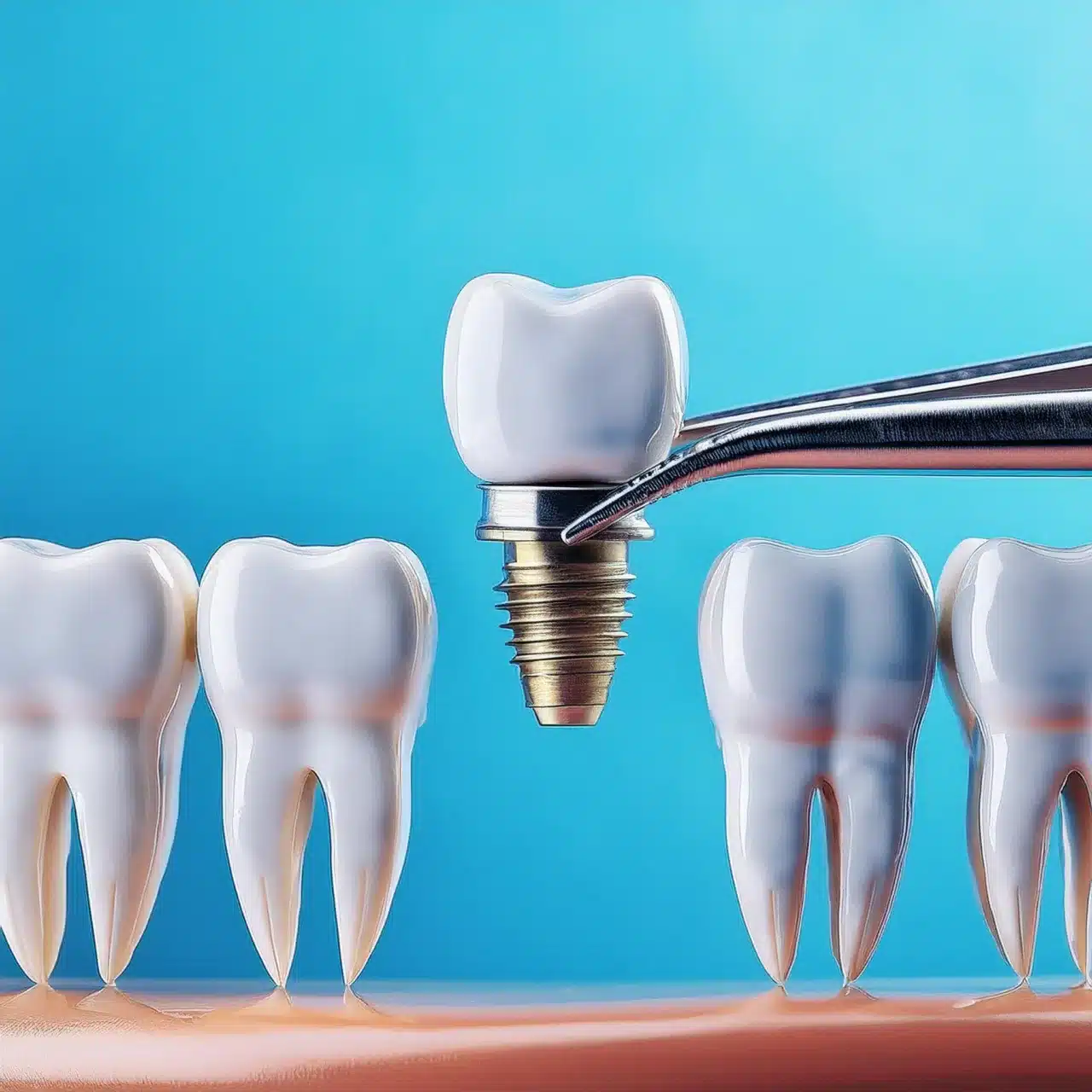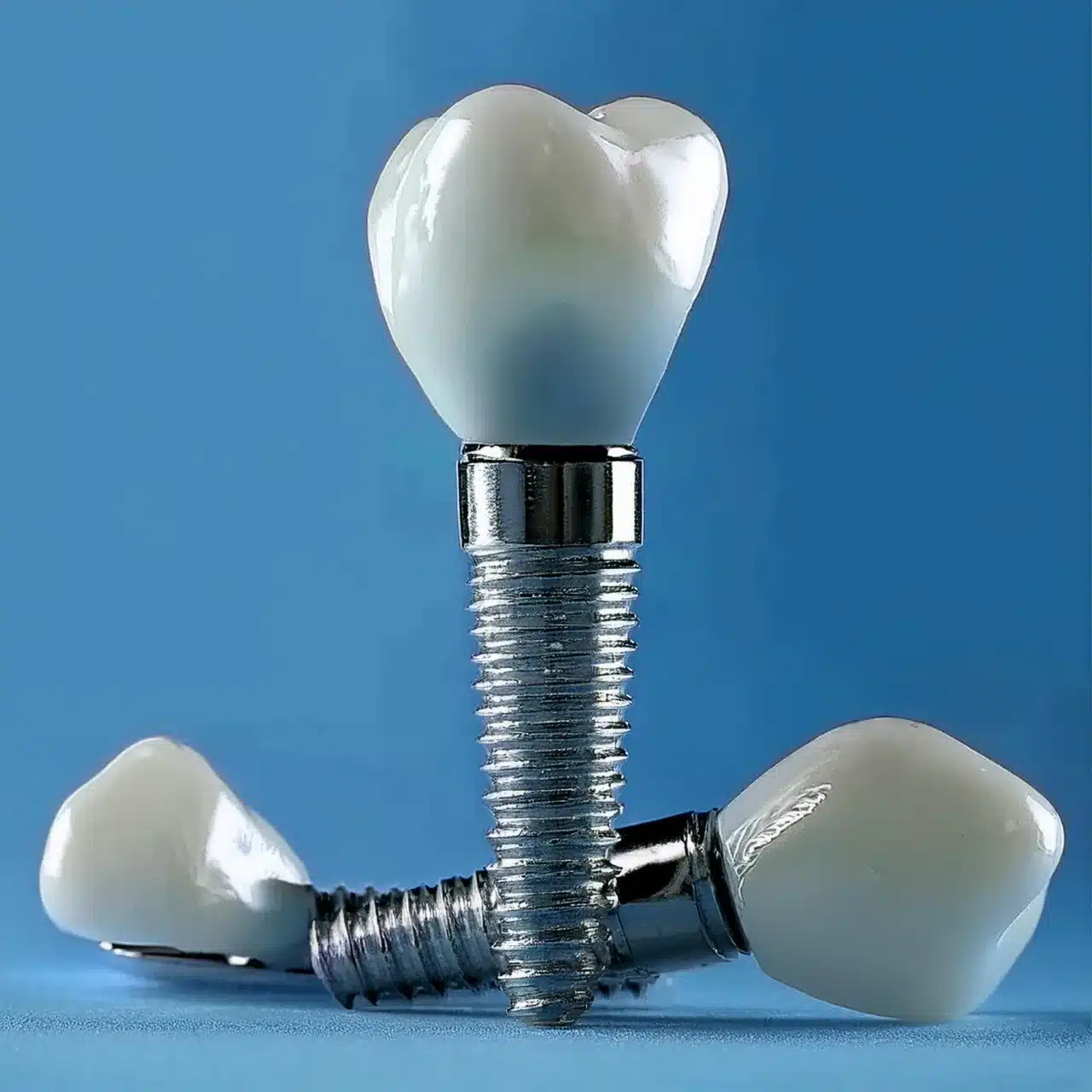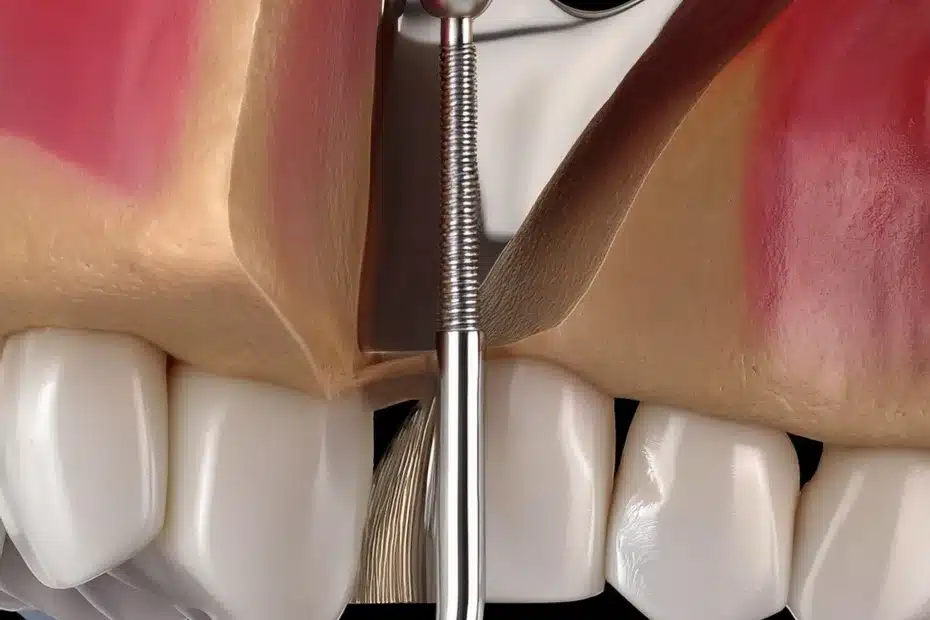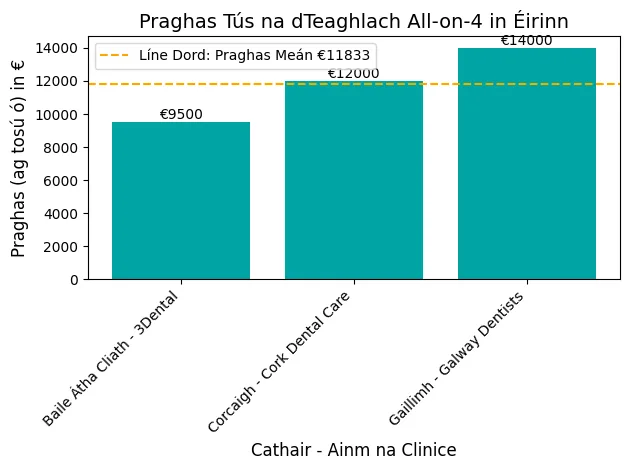Se state prendendo in considerazione impianti dentali ma vi è stato detto che non avete abbastanza osso nella mascella superiore, un rialzo del seno mascellare può essere la soluzione.
Questa procedura risolve il problema comune di un'altezza ossea insufficiente, ma cosa comporta e quanto funziona?
Che cos'è il sinus lift?
Il rialzo del seno mascellare è una procedura chirurgica che aumenta l'osso della mascella superiore per gli impianti dentali. Comporta il sollevamento della membrana del seno mascellare e l'aggiunta di materiale osseo da innesto. Questo intervento è necessario quando l'osso è insufficiente. I rialzi del seno mascellare hanno un'alta percentuale di successo, con studi che mostrano una sopravvivenza dell'impianto del 97-100%. Il recupero comporta in genere lievi disagi, con una guarigione completa entro 4-12 settimane.

Quando è necessario un lifting sinusale?
Il rialzo del seno mascellare è necessario quando l'altezza dell'osso nella mascella superiore non è sufficiente per gli impianti dentali.
Questo può accadere per molte ragioni, come ad esempio perdita ossea dalla malattia parodontale, dalla perdita dei denti o dall'anatomia naturale della cavità sinusale.
Sapere quando questa procedura è necessaria aiuta i pazienti a prendere decisioni informate sulla loro salute dentale.
Indicazioni per l'intervento chirurgico
Altezza ossea insufficiente: Uno dei motivi principali per cui si ricorre al rialzo del seno mascellare è la mancanza di un'altezza ossea sufficiente nella mascella superiore, necessaria per la stabilità degli impianti dentali.
Viene misurato prima dell'inserimento dell'impianto per determinare se è necessario un aumento.
Perdita ossea dovuta all'estrazione di un dente: Dopo l'estrazione di un dente, l'osso circostante può iniziare a riassorbirsi o a ridursi. Questa perdita ossea può essere abbastanza significativa da richiedere un rialzo del seno mascellare per fornire un supporto sufficiente per un impianto.
In alcuni casi, un aumento della cresta può essere eseguito insieme al rialzo del seno mascellare per affrontare la perdita di osso verticale e orizzontale della mandibola.Malattia parodontale: La malattia gengivale cronica può causare la perdita di osso nella mascella. Se ciò avviene nella mascella superiore, può ridurre l'altezza dell'osso disponibile per gli impianti, rendendo necessario un rialzo del seno mascellare.
Anatomia naturale dei seni paranasali: Alcune persone hanno naturalmente una cavità sinusale troppo vicina alla mascella superiore, che non lascia abbastanza osso per l'inserimento dell'impianto.
In questo caso, un rialzo del seno mascellare può creare lo spazio e il supporto osseo.

Procedure e tecniche
Le procedure di rialzo del seno mascellare si sono evolute ed esistono varie tecniche per soddisfare le diverse esigenze dei pazienti e le considerazioni anatomiche.
Queste tecniche aumentano l'altezza dell'osso nella mascella superiore per fornire una base stabile per gli impianti dentali.
Senza innesto vs. tradizionale
Senza innesto: Questo nuovo approccio elimina la necessità di innesti ossei e si affida al naturale processo di guarigione dell'organismo per rigenerare l'osso.
Gli studi dimostrano che i rialzi del seno mascellare senza innesto hanno un tasso di sopravvivenza dell'impianto del 97,92% (2).
È l'ideale per i pazienti che desiderano una procedura meno invasiva e non vogliono rischiare le complicazioni associate ai materiali da innesto.
Tradizionale: Si tratta di innesti ossei come autoinnesti (osso del paziente), allotrapianti (osso del donatore) o xenotrapianti (osso animale) per aumentare il volume dell'osso.
I rialzi sinusali tradizionali hanno un tasso di sopravvivenza dell'impianto del 98,73% (3).
Il tipo di materiale da innesto utilizzato può influire sul processo di guarigione e sul successo complessivo dell'intervento.
Confronto: Entrambi hanno i loro vantaggi e vengono scelti in base alle esigenze del paziente e alla competenza del chirurgo.
L'assenza di innesto comporta tempi di recupero più rapidi e un minor rischio di infezione, mentre la tecnica tradizionale è più prevedibile in termini di aumento del volume osseo.
Queste procedure sono studiate per ottenere il miglior risultato possibile per l'inserimento di impianti dentali, tenendo conto dell'anatomia e delle preferenze del paziente.
| Tipo di tecnica | Materiali utilizzati | Tasso di sopravvivenza dell'impianto | Tempo di recupero |
|---|---|---|---|
| Tecnica senza innesto | Nessuno | 97.92% | Recupero più rapido |
| Metodo tradizionale | Autoinnesti, Allotrapianti, Xenotrapianti | 98.73% | Recupero più lungo |
Materiali utilizzati per il rialzo del seno mascellare
La scelta dei materiali per il rialzo del seno mascellare è fondamentale per gli impianti dentali.
Per aumentare l'osso della mascella superiore si utilizzano diversi materiali, ciascuno con i propri vantaggi e considerazioni.
Tipi di materiali
Bio-Oss: Si tratta del materiale più comunemente utilizzato per i rialzi sinusali, derivato da ossa bovine sterilizzate.
Viene trattato per garantire la sicurezza e la compatibilità con i tessuti umani (2).
Osso autogeno: Questo materiale viene prelevato dal corpo del paziente stesso, di solito dal mento o dalla parte posteriore della mascella.
Ha il più alto tasso di successo grazie alla sua origine naturale e può integrarsi bene con l'osso esistente (3).
Innesto osseo liofilizzato demineralizzato: Questo tipo di innesto è costituito da osso umano che è stato trattato per rimuovere i minerali, rendendolo più poroso e favorevole alla crescita di nuovo osso (3).
Bioglass e PepGen P-15: Si tratta di materiali sintetici progettati per promuovere la rigenerazione ossea.
Utilizzato in combinazione con altri materiali da innesto per migliorare il processo di guarigione (3).
Cellulosa rigenerata ossidata (Surgicel): Questo materiale viene utilizzato per chiudere le lacerazioni della membrana di Schneiderian durante gli interventi di rialzo del seno mascellare per garantire l'integrità della cavità sinusale (1).
Idrossiapatite porosa: Se miscelato con osso autogeno, questo materiale migliora la formazione ossea e il contatto tra osso e impianto nei seni aumentati (2).

Risultati attesi e recupero
La comprensione dei risultati attesi e del processo di recupero di un rialzo del seno mascellare è fondamentale per i pazienti che prendono in considerazione gli impianti dentali.
Questa sezione vi darà un'idea del processo di guarigione, delle istruzioni post-operatorie e di cosa aspettarvi durante il periodo di recupero.
Istruzioni post-operatorie
Recupero immediato: Nelle prime 24-48 ore dopo l'intervento, i pazienti possono aspettarsi un certo disagio, gonfiore o un leggero sanguinamento.
Per alleviare questi sintomiutilizzare impacchi di ghiaccio per ridurre il gonfiore del viso, assumere i farmaci prescritti o gli antidolorifici da banco, utilizzare tamponi di garza per controllare eventuali emorragie inattese, non sollevare oggetti pesanti o svolgere attività faticose e seguire una dieta a base di cibi morbidi; evitare cibi duri o croccanti (2).
Dieta e idratazione: Si raccomanda una dieta morbida ad alto contenuto proteico; includere alimenti come le uova strapazzate. Aumentare l'assunzione di liquidi ad almeno 4 bicchieri da 8 once al giorno ed evitare l'uso della cannuccia.
Aumentare gradualmente la dieta a cibi solidi e non saltare i pasti per una corretta guarigione (2).
Igiene orale: È importante una buona igiene orale, sciacquando delicatamente la bocca con acqua tiepida e mezzo cucchiaino di sale disciolto o con un risciacquo medicato.
Spazzolare i denti due volte al giorno; si raccomanda anche la delicatezza intorno al sito chirurgico (2).

Evitare il fumo: Il fumo deve essere evitato per almeno 5 giorni e idealmente per tutta la durata della guarigione, poiché aumenta le probabilità di successo dell'innesto osseo e dell'integrazione dell'impianto (2).
Appuntamenti di follow-up: I pazienti saranno sottoposti a visite di controllo per garantire la corretta guarigione. I punti di sutura che non si sono sciolti saranno rimossi durante queste visite (3).

Rischi e complicazioni
Sebbene il rialzo del seno mascellare sia una procedura sicura ed efficace, esistono rischi e complicazioni potenziali di cui i pazienti devono essere consapevoli.
Conoscere questi rischi vi aiuterà a prendere decisioni informate e a gestire le vostre aspettative.
Complicazioni comuni
Infezioni sinusali: Uno dei rischi dell'intervento di rialzo del seno mascellare è rappresentato dalle infezioni sinusali.
Sono rari, ma possono verificarsi con qualsiasi procedura chirurgica (1).
Fallimento dell'impianto: Sebbene sia raro, può verificarsi un fallimento dell'impianto.
Ciò può essere dovuto a vari motivi, tra cui un'integrazione ossea inadeguata o un'infezione (3).
Recessione delle gengive: La recessione gengivale intorno al sito implantare è un'altra possibile complicanza. Questa può influire sul risultato estetico e può richiedere un ulteriore trattamento (3).

Perdita ossea: Con il tempo si può verificare una perdita di osso intorno all'impianto, che può comprometterne la stabilità.
Per monitorare e risolvere il problema è importante sottoporsi a regolari visite di controllo (3).
Danni ai nervi: Esiste il rischio di danni ai nervi durante l'intervento, che possono causare intorpidimento o alterazione della sensazione nell'area interessata (3).
Sinusite cronica: I pazienti con patologie sinusali preesistenti hanno un rischio maggiore di sviluppare una sinusite cronica dopo un intervento di rialzo del seno mascellare (2).
Conclusioni e risultati chiave
Punti chiave
Alto tasso di successo: Il Sinus Lift ha un'alta percentuale di successo, 97,0% per 1 stadio e 97,4% per 2 stadi (2).
Tempo di recupero: La fase finale del recupero del rialzo del seno mascellare è di 2-6 mesi, a seconda del processo di guarigione (1).
Tasso di fallimento dell'impianto: Il fallimento precoce dell'impianto è stato pari al 2,8% dei casi, significativamente associato a cavità sinusali di grandi dimensioni e a complicazioni intraoperatorie (3).
Tasso di successo nel tempo: il tasso di successo degli impianti dentali nei rialzi del seno mascellare è stato di 95,2% a 24 mesi, 100% di successo per i casi con altezza ossea ≥ 4 mm (2).

Conclusione
Il rialzo del seno mascellare è una soluzione efficace per l'insufficiente altezza dell'osso nella mascella superiore per gli impianti dentali.
Con un'alta percentuale di successo e tempi di recupero gestibili, è un'opzione affidabile per i pazienti che desiderano ripristinare i propri denti.
Conoscere questi elementi vi aiuterà a prendere decisioni informate sulla vostra salute dentale.
FAQ
Riferimenti
Albadani MM, Elayah SA, Al-Wesabi MA, et al. Un approccio di sollevamento del seno mascellare senza innesto con posizionamento simultaneo di impianti dentali: uno studio clinico prospettico. BMC Oral Health. 2024;24:227.Articolo: Un approccio di sollevamento del seno mascellare senza innesto con posizionamento simultaneo di impianti dentali: uno studio clinico prospettico
Panchal M, Khare S, Khamkar P, et al. Impianti dentali: Una revisione dei tipi, dell'analisi del design, dei materiali, dei metodi di produzione additiva e degli scopi futuri. J Dent Sci. 2022;17:1-13.Articolo: Impianti dentali: Una rassegna di tipologie, analisi del design, materiali, metodi di produzione additiva e scopi futuri
Utah Perio. Guida alla procedura di rialzo del seno mascellare: Cosa ci si può aspettare. Utah Perio. 2023.Articolo: Guida alla procedura di rialzo del seno mascellare: Cosa ci si può aspettare




